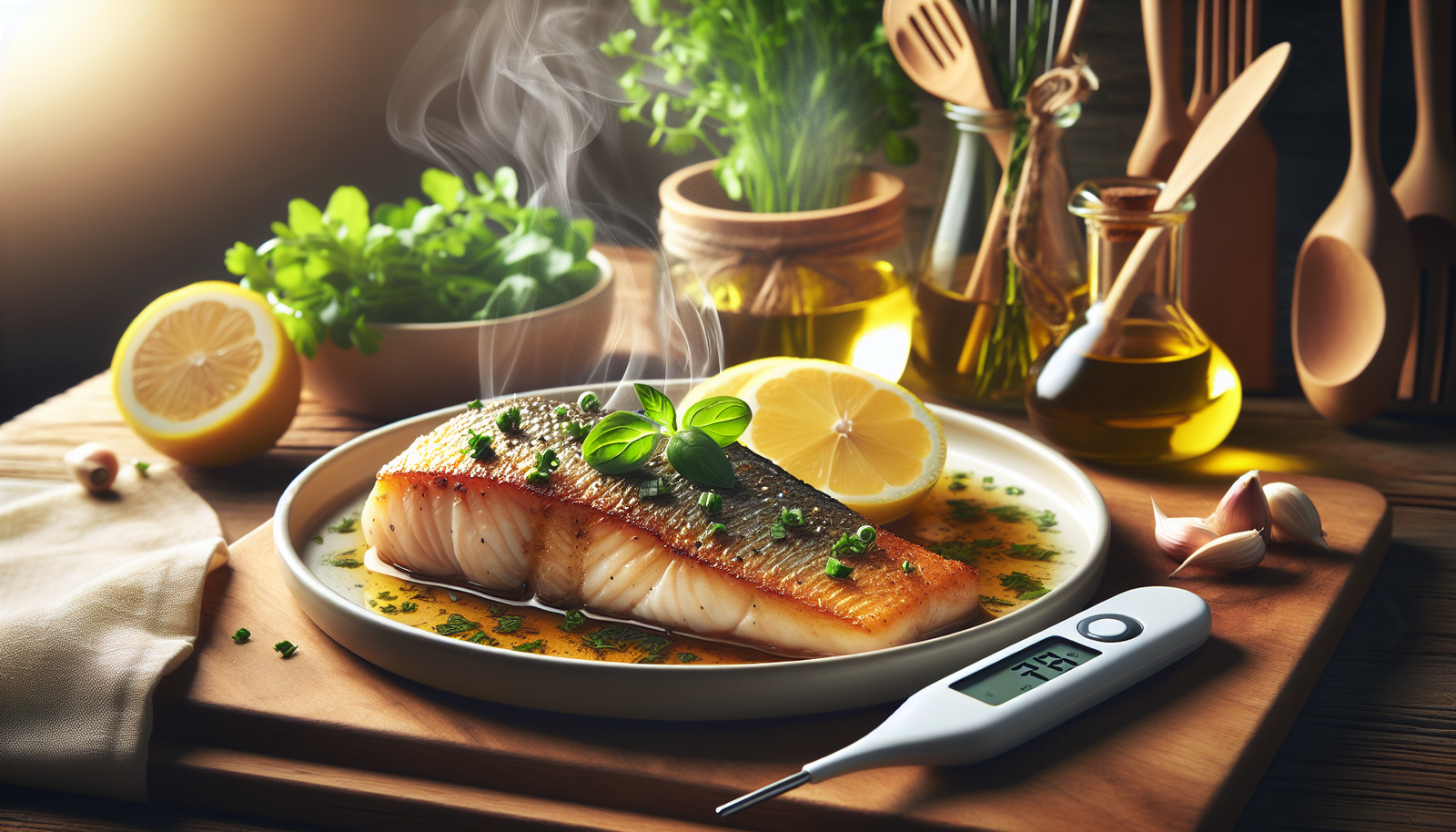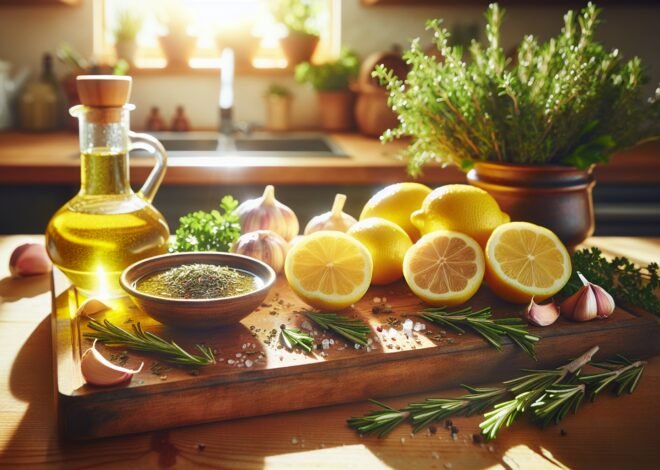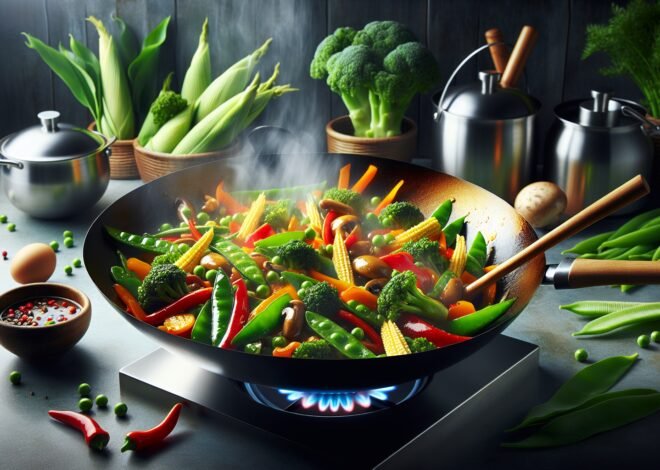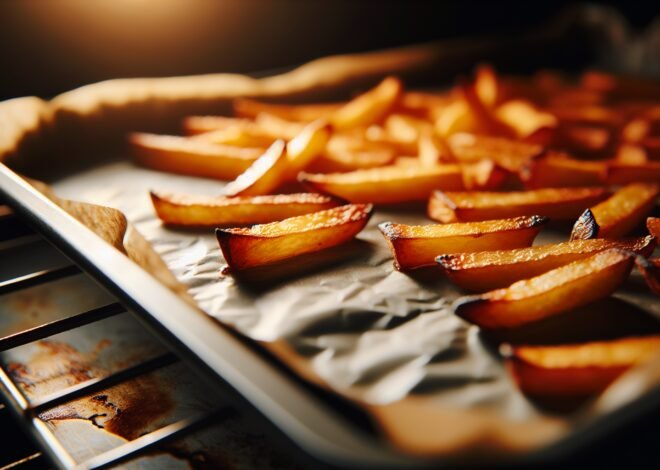
How to Avoid Overcooking Fish: Tips for Juicy Fillets Every Time
Avoid overcooking fish to ensure flavors remain intact and fillets stay juicy. Surprisingly, more than half of home cooks unintentionally overcook their fish, losing both taste and moisture. This guide offers key tips on perfecting cooking time, identifying doneness, and preserving tenderness with various cooking methods. By learning these techniques, you can transform every fish dish into a delightful culinary experience. Dive in to discover how to cook fish perfectly every time and impress with succulent, flavorful dishes.
Understanding the Importance of Properly Cooking Fish
Cooking fish might seem straightforward, but achieving the perfect texture and flavor requires a bit of finesse. Poorly cooked fish can lead to a disappointing meal, while perfectly cooked fish can elevate your dining experience. The key lies in understanding why fish is often overcooked, the science that makes it juicy and tender, and the health benefits that come with it.
Why Overcooking Fish is a Common Mistake
Overcooking fish is an easy mistake, even for seasoned home cooks. Fish is delicate, with a fine line between undercooked and overdone. Many tend to err on the side of caution, fearing raw fish, leading to a dry and chewy outcome.
Fish continues to cook after being removed from heat, a process known as carryover cooking, which often tips it into the overcooked territory. Additionally, many are unsure about the right cooking times, causing them to leave fish on the stove or grill longer than necessary. The fear of serving raw fish can also lead to excessive cooking.
The solution lies in understanding fish types and their specific cooking needs. Fatty fish like salmon have more leeway than leaner ones like cod. Recognizing these differences can prevent the common pitfall of overcooking.
The Science Behind Moist and Tender Fish
Achieving moist and tender fish relies on understanding its unique protein structure. Fish has shorter muscle fibers and less connective tissue than land animals, which means it cooks quickly. This quick cooking time is what gives fish its tender texture when done right.
Fish muscle contains less collagen, which dissolves at lower temperatures. This leads to a naturally gelatinous texture when cooked gently. Retaining moisture is also about controlling temperature. Fish should be cooked at a temperature that allows the proteins to set without expelling moisture.
Gentle cooking methods like poaching and steaming highlight the delicate structure of fish, preserving its natural juiciness. These methods also offer more control, making it easier to avoid overcooking.
Health Benefits of Perfectly Cooked Fish
Fish is a nutritional powerhouse, and cooking it properly enhances its health benefits. Rich in omega-3 fatty acids, fish supports heart health, brain function, and reduces inflammation. These benefits are maximized when fish is cooked to perfection, as overcooking can deplete nutrients.
A perfectly cooked fish maintains its protein integrity, providing essential amino acids needed for muscle repair and growth. Vitamins and minerals like vitamin D, iodine, and selenium remain intact, contributing to overall well-being.
Cooking methods such as grilling, baking, or steaming are not only healthier but also help in retaining these nutrients. When fish is prepared correctly, it becomes a delicious and beneficial addition to a balanced diet.
Techniques to Prevent Overcooking Your Fish
Mastering the art of cooking fish is all about technique. From controlling temperature to choosing the right method, these strategies can help ensure your fish is cooked to perfection. Knowing when to stop cooking is as crucial as knowing how to start.
Mastering Cooking Times and Temperatures
Cooking fish to the right temperature is key. Unlike meat, fish requires a shorter cooking time due to its delicate nature. The general rule of thumb is to cook fish for about 8-10 minutes per inch of thickness. This guideline helps keep fish tender and juicy.
Temperature control is equally important. Fish should be cooked at medium to medium-high heat. This ensures even cooking without drying it out. Different types of fish may require slight adjustments in time and temperature to maintain their unique textures.
Using visual cues, such as the opaqueness and flakiness of the fish, can also guide you. When the flesh turns opaque and easily flakes with a fork, it’s done. This simple test ensures the fish remains moist.
Using a Thermometer for Perfect Doneness
For precision, a digital thermometer is indispensable. It removes the guesswork, allowing you to measure internal temperatures accurately. Most fish are perfectly cooked at an internal temperature of 145°F (63°C).
Insert the thermometer into the thickest part of the fish for an accurate reading. This method ensures that the fish is cooked through without being overdone. A thermometer can also be used to monitor carryover cooking, helping you pull the fish off the heat at just the right moment.
Thermometers are especially useful when grilling or baking, where visual cues can be misleading. This tool is a small investment that makes a big difference in achieving perfectly cooked fish.
Tips on Moist Cooking Methods for Fish
Moist cooking methods help preserve the natural juices in fish, enhancing flavor and texture. Techniques such as poaching, steaming, and baking in parchment are ideal for maintaining moisture.
Poaching involves cooking fish in simmering liquid, such as broth or wine. This gentle method infuses flavor without drying the fish. Steaming, on the other hand, cooks fish using vapor, ensuring it remains succulent.
Baking fish in parchment, also known as en papillote, seals in moisture and flavors. The enclosed environment cooks the fish evenly, preserving its natural juices. These methods are not only effective but also simple, making them accessible for any home cook.
Choosing the Right Tools and Ingredients
Selecting the best tools and ingredients is crucial for preparing delicious fish dishes. The right equipment and fresh ingredients can turn a mundane meal into a culinary delight. Equip your kitchen and pantry wisely to enhance your fish-cooking adventures.
Best Kitchen Equipment for Cooking Fish
Quality kitchen equipment can make a world of difference when cooking fish. Non-stick pans are essential for sautéing and pan-frying, preventing the fish from sticking and breaking apart.
A cast-iron skillet is versatile, providing even heat distribution for searing or baking. This tool is ideal for achieving a crispy exterior while keeping the inside moist. For grilling enthusiasts, a fish basket is invaluable, allowing you to flip delicate fillets without them falling apart.
A steamer basket is perfect for gentle cooking, while a roasting pan with a rack helps achieve even baking. Investing in these tools simplifies the cooking process and enhances the final result.
Freshness Indicators to Look for in Fish
Freshness is paramount when selecting fish. Fresh fish has a mild, ocean-like smell, without any strong, fishy odor. Its eyes should be bright and clear, not cloudy or sunken.
The skin should appear shiny and metallic, and the flesh should be firm, springing back when pressed. Gills should be a vibrant red or pink, indicating freshness. When buying fillets, check for moistness and translucence.
Consider the source of your fish. Purchasing from reputable suppliers or markets ensures high quality. Seasonal and local fish are often fresher, offering better flavor and texture.
Pairing Ingredients to Enhance Fish Flavor
Pairing the right ingredients with fish can elevate its taste. Herbs like dill, parsley, and cilantro add freshness, while citrus fruits such as lemon and lime offer a tangy contrast.
Garlic and ginger provide depth and warmth, complementing the mild flavor of fish. Sauces like pesto, hollandaise, or a simple herb butter can enhance without overpowering.
Consider the type of fish when choosing ingredients. Rich salmon pairs well with bold flavors, while delicate white fish benefits from subtle accents. Experimenting with different combinations can lead to delightful flavor discoveries.
Conclusion
Overcooking fish leads to dry and tough texture, diminishing its flavor. Fish cooks quickly due to its high protein and low fat content. The ideal internal temperature for most fish is around 145°F (63°C). To prevent overcooking, monitor the cooking process closely and use methods like poaching or steaming. Employing a food thermometer can help achieve perfect doneness without drying out the fish.
FAQ
How can I tell if fish is overcooked?
Overcooked fish often has a dry and tough texture and may appear dull and crumbly. It lacks the natural moisture and delicate flakes you expect from properly cooked fish.
What are the best cooking methods to prevent overcooking fish?
Using methods like steaming, poaching, and baking helps maintain moisture and control temperature, making it easier to prevent overcooking. Grilling and pan-searing require careful attention, as they cook fish quickly.
What are the signs of perfectly cooked fish?
Perfectly cooked fish feels firm yet tender, and flakes easily with a fork. The color should be vibrant, with a translucent sheen, and the flavor should be fresh and mild.
How does overcooking affect the texture and flavor of fish?
Overcooking causes the fish to lose its natural juices, leading to a tough, rubbery texture. It can also result in a bland taste, as the heat diminishes the fish’s natural flavors.
What cooking temperatures help avoid overcooking fish?
Keeping the internal temperature between 125°F to 145°F ensures fish remains moist and flavorful. Using a food thermometer can help achieve perfect results every time.
What are common mistakes that lead to overcooking fish?
Cooking fish at too high a temperature and for too long are common errors. Not monitoring the process closely and using the wrong cooking method for the type of fish can also result in overcooking.











